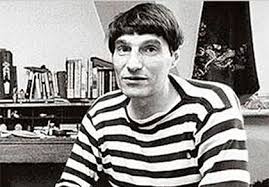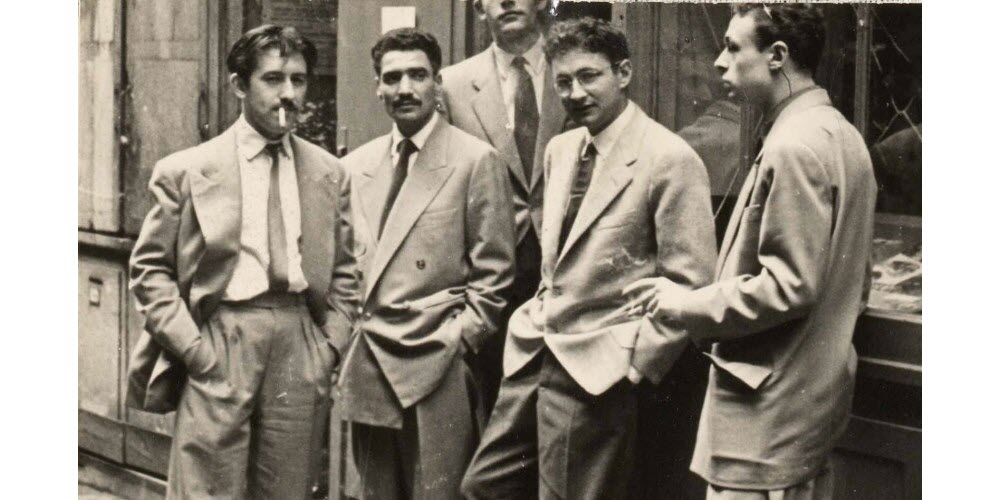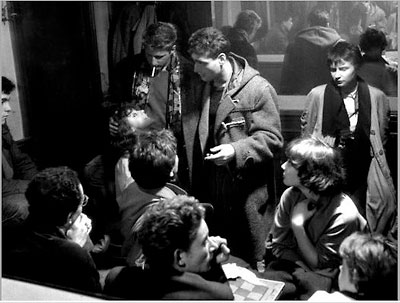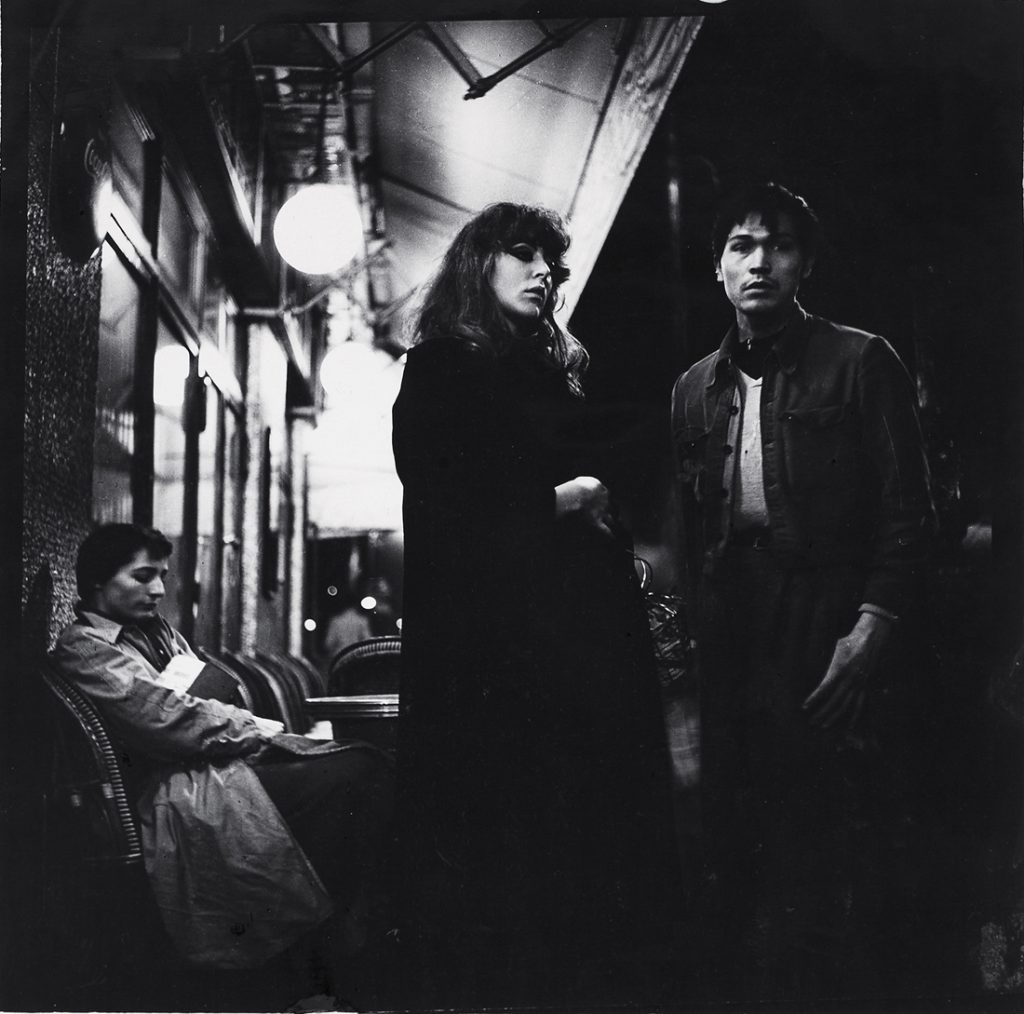By David Black
9 January 2023
The British Dérive
Alex Trocchi, Scottish novelist, Francophile and one-time Situationist, once reminisced about his friendship with Guy Debord in the 1950s:
“I remember long, wonderful psycho-geographical walks in London with Guy. He took me to places in London I didn’t know, that he sensed, that I’d never have been to if it hadn’t been with him. He was a man who could discover a city… He had a magical quality… Distances didn’t seem to matter to the man. Walking in London, in the daytime, at night, he’d bring me to a spot he’d found, and the place would begin to live. Some old forgotten part of London. Then he’d reach back for a story, for a piece of history, as if he’d been there. He’d quote from Marx, or Treasure Island, or De Quincey.”[ Greil Marcus, Lipstick Traces, p.388.

“Psychogeography” was formulated by Debord and his colleagues as “the study of the specific effects of the geographical environment, consciously organized or not, on the emotions and behaviours of individuals.” The practice of Psychogeography involved the Dérive: a form of daydreaming during excursions on foot through the urban environment, defined as “a technique of transient passage through varied ambiances.”
Psychogeography has, directly or indirectly, influenced a number of British writers. In Michael Moorcock’s novel of 1988, Mother London, the space-time of the city is explored through the fragmented voices of mental patients in the Thatcherite 1980s, whose traumas are traced back to the mythology and reality of the Blitz. As a lead character says, “All great old cities possess their special myths. Amongst London’s is the story of the Blitz, of our endurance.” Indeed, the primary cause for the fate of modern London was the Second World War, in which the Luftwaffe’s bomber squadrons, doodlebug missiles and V2 rockets killed 30,000 Londoners and destroyed 70,000 buildings. Ironically, the damage to the city empowered post-war planners, architects and property developers to impose further environmental disaster by bulldozing much of Georgian and Victorian London under the banner of ‘modernization’ — although, by way of recompense, money-making ‘heritage’ spots were saved for tourism, and the facades of many iconic buildings were preserved to cover up the gutting of the interiors.
In the 21st century, as the British economy sinks into the North Sea under the mists of Brexiternity, the London skyline continues its upward trajectory of dystopian skyscrapers; all of which appear to give-the-finger to rest of the city as a Psychogeographical “fuck you” from the non-doms, oligarchs, banksters and money-launderers who run the British economy through their tropical tax havens. The once sweet River Thames, regularly polluted with waste by the Thames Water company (that flagship of Thatcher’s privatisations), now flows softly only for tourists, millionaire party-goers on pleasure boats, and the tenants of the new yuppie-hutches which screen the river off from the Londoners who once enjoyed walking its banks.
In Britain, psychogeography, in the hands of academics, journalists, novelists and visual artists has become an inventive technique for exploring cities. Novelist, Will Self, an admirer of Guy Debord’s Situationist writings, teaches psychogeography at London Brunel University. One of Self’s nonfiction books, Psychogeography (2007), features accounts of his Dérives, walking the streets of London and other cities. By consciously suppressing the usual concerns of time and destination, Self finds for himself a more autonomous actualisation of subjective experience, capable of “dissolving the mechanised matrix which compresses the space-time continuum.” Karen O’Rourke writes in Psychogeography: A Purposeful Drift Through the City (2021), “If geographers ‘carve’, ‘draw’, or ‘write’ the earth, psychogeographers add a zest of soul to the mix, linking earth, mind and foot.” Psychogeography, “[i]n its diverse forms.. embodies the desire to renew language, social life, and oneself. For contemporary psychogeographers, the drift is purposeful; it can reveal the city’s underlying structure.” Sonia Overall, in Heavy Time (2021), drifts along the old pilgrim roads from Canterbury to London and takes in her home town of Ely and a landscape of ancient chapels, ruined farms and suburban follies, Overall, in her secular Dérive, seeks out “thin places”, which constitute a sort of membrane where past and the present seem to collide and suggest “where new ways of living might begin.”
Iain Sinclair, in his novels and poems from the 1970s onwards, has utilised psychogeographic techniques without paying much attention to their Situationist origins. His ’Lights Out for Territory, 9 Excursions in the Secret History of London (1997) inaugurated a twenty-year cycle of mainly non-fiction books on the unravelling of the city’s social and historical fabric, culminating in The Last London: True Fictions from an Unreal City (2017). The pragmatic nihilism which has “renewed” the London landscape has negated the Dérive as meaningful activity and has even changed the meaning of words to cover up old adages such as “never apologise, never explain”:
“So: the last London. It has to be said with a climbing inflection at the end. Every statement is provisional here. Nothing is fixed or grounded. Come back tomorrow and the British Museum will be an ice rink, a boutique hotel, a fashion hub. The familiar streets outside will have vanished into walls of curved glass and progressive holes in the ground. The darkened showroom of the Brick Lane monumental mason with the Jewish headstones will be an art gallery. So?…That insignificant ‘so’ has moved with the times… Now it’s a signifier, a warning bleep letting the recipient know that nothing that follows has any billable consequence. The speaker, the spokesperson, the hireling expert, is not accountable.”
Having charted the social-cleansing of the poorer parts of London by means of development projects and gentrification, Sinclair declared: “I don’t think there is any more that can be said. The topic has outlived its usefulness and become a brand.”
An especially banal example which illustrates this branding is a promotional piece by Frank Jacobs in the Big Think for the 2022 London Circle Walk. He advises,
“Don’t look up ‘psychogeography’. Again and again, you’ll come across Guy Debord, the Marxist theorist who coined the term in 1955… Persist in your research, and you’ll fall down a rabbit hole of mid-century French social, political, and philosophical theory, from which it is safe to say no one escapes entirely unscathed. Rather, think of it simply as what the term itself promises: the crossroads of psychology and geography… It’s unclear whether that would still be in keeping with the tenets of psychogeography as defined by Debord and practiced by the Situationists. But it does sound like a lot more fun than one of their meetings.”
If Jacobs was a bit more familiar with what he writing about, he might recognise himself as a “recuperator.” One of the key tenets of Situationist thought is the concept of recuperation, which describes the process of how subversive elements are contained,co-opted or neutralised by assimilation into the Spectacle as consumable commodities. As for “fun”, defined by the Oxford English Dictionary as “boisterous joviality or merrymaking”, there was, as we shall see, plenty of that, but a lot more.
Down the Rabbit Hole: How it Began
After Liberation from the Nazis, post-war revolutionaries in Paris dedicated to new ways of living began to challenge the dominance of Surrealism within the avant-garde. As Debord articulated it 20 years later in Society of the Spectacle:
“Dadaism and surrealism are the two currents which mark the end of modern art. They are contemporaries, though only in a relatively conscious manner, of the last great assault of the revolutionary proletarian movement; and the defeat of this movement, which left them imprisoned in the same artistic field whose decrepitude they had announced… Dadaism wanted to suppress art without realizing it; surrealism wanted to realize art without suppressing it.”
In 1947 a major Paris publishing house issued a book by the 20-year-old Romanian exile, Isidore Isou, entitled Introduction d’une nouvelle poésie et d’une nouvelle musique. Isou analyzed poetic language as having gone through an “amplification” process in the romantic period, followed by a “chiseling” process under Baudelaire, Rimbaud and Mallarme, until Dada finally destroyed it. For Isou, once the chisel of history had done its work, the truth and beauty of poetic language was no longer to be found in words, but in letters, representing figures and sounds. Isou’s “Letterists” (or “Lettrists”) experimented in paintings made up of letters, and sound-poems. They also challenged the separation between art and life. In a manifesto for a “Youth Front” Isou hailed the youth of France as a sort of sub-proletariat: alienated by the educational system, excluded from consumerism by low pay or unemployment, and oppressed by the archaic French Penal Code. The first act of the Youth Front was a riotous assualt on the staff at a brutal Catholic orphanage, which ended in arrest and imprisonment for some of the attackers. In a similar spirit, in 1950, a group of Letterists led by Michel Mourre, disguised as a Dominican monk, disrupted Easter Mass at Notre Dame by announcing “God is Dead,” and reading out an anti-religious poem. They were attacked with swords by the Swiss guards and almost lynched by the congregation before the police came to the rescue and arrested them. On the cultural front, venerable Surrealists, regarded by Isou as conformist and bourgeois, found their exhibitions and poetry readings disrupted by Letterists shouting ‘”surrealism is dead!”
Isou extended the “chiseling” concept to cinema with his Traite de bave et d”eternite (Slime and Eternity) which, when “premiered” at the Cannes Film Festival, caused a near riot (not least because Isou hadn’t finished it, so that for last 90 minutes the audience was subjected to the soundtrack in total darkness). In 1952 Isou recruited two other film-makers: Guy Debord and Gil Wolman.

In 1952, at the Paris premiere of Charlie Chaplin’s Limelight, Debord and Wolman handed out a statement which ended with the words: “the footlights have melted the make-up of the supposedly brilliant mime. All we can see now is a lugubrious and mercenary old man. Go home Mister Chaplin.” As Chaplin had been barred from the United States for suspected “communist” sympathies, the French Left was deeply offended by the action. The attack was probably motivated at least in part by a statement of support for Chaplin put out by leading Surrealists. The Chaplin “disruption” was too much for Isou, who first praised it, but then backtracked and denied all responsibility. Debord and Wolman, along with writer Michele Bernstein, took this as their cue to break with Isou and form a rival “Letterist International.”

Through a Rather Brief Unity of Time
The members and fellow-travelers of the Letterist International were young; nearly all of them in their teens or early twenties. These “lost children” (les enfants perdus) were of the generation that had grown up during the Nazi occupation (some of their parents had been Jewish deportees or Maquisards), but had been too young to fight in the resistance. As political radicals, they felt betrayed by the re-imposition, post-Liberation, of a “traditional” conservatism which kept intact the authoritarian penal code and a Gendarmarie which had in large part collaborated with the Nazi occupiers. They also felt betrayed by the bureaucratic, class-collaborationist French Communist Party, the ineffective and dogmatic Trotskyists, and the recuperated Surrealist avant-garde. Also, they did their best to resist conscription for France’s imperialist wars in Indo-China and Algeria.
The headquarters of the new international was a bar in the Arab quarter of Paris’s Left Bank. According to one of the regulars, Elaine Papai (who married Jean-Louis Brau, the Letterist poet):
“The life of the Situationist International cannot be disentangled from Saint-German-des-Prés and the climate that once reigned in that neighbourhood. The Letterist International had set up its headquarters at Moineau’s, a low dive in Rue du Four where the letterists were joined by hitherto unaffiliated young revolutionaries. Drugs, alcohol, and girls (especially underage ones) were part of the folklore of the Letterist International, as revealed in certain slogans of that time which, curiously enough, reappeared on the walls of Paris in May 1968. ‘Never Work!’ ‘Ether is freely available,’ or ‘Let us live!’”
(Quoted in Vincent Kaufmann, Guy Debord: Revolution in the Service of Poetry)
Another young woman of the group, the Australian artist, Vali Myers, recalls,
“They were the rootless children from every corner of Europe. Many had no home, no parents, no papers. For the cops, their legal status was “vagrant.” Which is why they all ended up sooner or later in La Santé [prison].We lived in the streets, in the cafes, like a pack of mongrel dogs. We had our hierarchy, our own codes. Students and people with jobs were kept out. As for the few tourists who came around to gawk at “existentialists,” it was all right to con them. We always managed to have rough wine and hash from Algeria. We shared everything.”
(Quoted in Kaufmann, ibid)

Unlike the rest of the avant-garde, the Letterist International refused to be “answerable” to the court of art criticism and the gaze of the “other,” refused to seek fame, and declined to market anything they produced. The LI’s mimeographed journal Potlatch, which appeared in twenty issues between June 1954 and November 1957, had an eventual print run of five hundred copies. It was always given away free to friends of the group, or mailed to people who expressed an interest. The Letterist International’s theory of “unitary urbanism” was first formulated by the nineteen-year-old Ivan Chtcheglev:
“Darkness and obscurity are banished by artificial lighting, and the seasons by air conditioning. Night and summer are losing their charm and dawn is disappearing. The urban population think they have escaped from cosmic reality, but there is no corresponding expansion of their dream life. The reason is clear: dreams spring from reality and are realized in it. The latest technological developments would make possible the individual’s unbroken contact with cosmic reality while eliminating its disagreeable aspects. Stars and rain can be seen through glass ceilings. The mobile house turns with the sun. Its sliding walls enable vegetation to invade life. Mounted on tracks, it can go down to the sea in the morning and return to the forest in the evening… The architecture of tomorrow will be a means of modifying present conceptions of time and space.”
‘Unitary Urbanism’. International Situationists Issue !
Unitary urbanism expressed a vision of city planning based on aesthetic and technological innovations in architecture, but freed from subordination to the needs of corporate developers and the endless expansion of private car ownership. Such pleasurable activity as the Dérive had yet to be impoverished by the pollution and noise of traffic jams, and the vandalism of planners and developers. Chtcheglev could still write of a future in which city dwellers would reclaim the streets: “we will construct cities for drifting… but with light retouching, one can utilize certain zones which already exist. One can utilize certain persons who already exist.”v
In 1957 the Letterist International, the Movement for Imaginist Bauhaus, and the former-surrealists of CoBrA (Copenhagen-Brussels-Amsterdam) led by the Danish painter Asger Jorn, came together to found the Situationist International (1957-72). Within a few months other groups from Italy and West Germany affiliated to the SI, thus inaugurating a stormy fifteen-year process of fusions, schisms and expulsions, and an equally stormy spread across the globe of Situationist ideas, which were themselves by no means immune to ideological and cultural “recuperation.” The concept of détournement, in the hands of practitioners throughout the world, was to give rise to numerous innovations, such as the subversive use of comic books and pirate radio, the defacing of advertisements with additional images and words. But détournement. first conceived as a counter-measure against recuperation, was further developed by the Situationists into a more general concept of spontaneous rebellion against the technology of consumption.
By 1968, when the streets of the Paris were once again fought over, the city of the Letterists had disappeared and its utopian urbanist potential had already been destroyed by urban development and tourism..Debord observed in Society of the Spectacle (1967):
“Tourism, human circulation considered as consumption, a by-product of the circulation of commodities, is fundamentally nothing more than the leisure of going to see what has become banal. The economic organization of visits to different places is already in itself the guarantee of their equivalence. The same modernization that removed time from the voyage also removed from it the reality of space… Urbanism is capitalism’s seizure of the natural and human environment; developing logically into absolute domination, capitalism can and must now remake the totality of space into its own setting. ”
How it Ends
In 1988, Debord reflected that in the two decades since he wrote Society of the Spectacle, capitalist modernization had led to the stage of the “integrated spectacle”, characterized by incessant technological renewal; fusion of State and economy; generalized secrecy; forgeries without reply; and a perpetual present which “wants to forget the past and no longer seems to believe in a future.” His analysis foresaw the feed-back loop now perfected by electronic social media, “achieved by the ceaseless circular passage of information, always returning to the same short list of trivialities, passionately proclaimed as major discoveries.” Meanwhile, he continued, “news of what is genuinely important, of what is actually changing, comes rarely, and then in fits and starts. It always concerns this world’s apparent condemnation of its own existence, the stages in its programmed self-destruction.”
The “cancellation of the Future” – or rather of any positive “visions” of it – has been silently accepted by the pragmatists of the political class. Labour Party leader, Kier Starmer, having viciously suppressed Jeremy Corbyn’s mass following, blurts out meaningless abstractions about “security” and “stability” for a “dynamic, agile, strong and, above all, focused” nation, “driven by clear, measurable objectives”. As Adam Curtis suggested in a recent podcast, the future is seen by politicians as a dark and dangerous thing-in-itself, which the fearful and obedient masses supposedly rely of politicians to protect them from. The politicians pretend that they know what they are doing. The public knows they are pretending. And the politicians know that the public knows they are pretending. And yet, any talk of actually doing something about the problems in the here and now is regarded as a dangerous and “unhelpful” heresy which our current Tory regime seems well on the way to making a criminal offence. I would suggest, by way of conclusion, that the Letterist and Situationist “extremists” had, as well as a sense of history, much more of a grasp of strategy and activist practice than today’s environmental campaigners have.
REFERENCES AND FURTHER READING ON THIS SITE
Asger Jorn, Détourned Painting and the Situationists
Alexander Trocchi: Psychedelic Situationist
Situationist Theses on the Paris Commune
Charles Radcliffe, former Situationist
Iain Sinclair: Poetry with the AMM All-Stars on Resonance FM
FURTHER READING OFF-SITE
Karen O’Rourke, in Psychogeography: A Purposeful Drift Through the City
Guy Debord, Society of the Spectacle
Guy Debord, Comments on Society of the Spectacle
Iain Sinclair, The Last London, London Review of Books Vol. 39 No. 7 · 30 March 2017
Adam Curtis on the fall of the Soviet Union’s worrying parallels with modern Britain (Youtube)

As someone politically wakened by Leaving the 20th Century – the first Marxist polemic which struck home – I understand your affection for the Situationists, but I resist Greil Marcus’s nostalgia for a lost Parisian bohemia. Your “Autumn Leaves” YouTube expressed that nostalgia so eloquently I don’t think I need any more. I’d prefer a sharp critique of Debord’s aestheticism as Ill-equipped to explode the PCF’s travesty of Lenin (a failing which becomes graphic if you read Rab-Rab’s translation of Mayakovsky et al on Lenin in 1924, Coiled Verbal Spring: Devices of Lenin’s Language, copies available at all AMM All-Stars sessions at the Betsey Trotwood). In the days of the “political” Association of Musical Marxists (2010-2015) we clashed with another “aesthetic critique”, that of Sean Bonney, as we sought to influence the student movement. His beat Rimbaudism – which I blame for his suicide – Ill-equipped his followers to support Corbyn (when they went on the knocker for Corbyn up north for his funeral they were dismissed as a bunch of junkies). I think Rab-Rab show the way to a better transcendence of aesthetics and politics, one which suits my and Peter’s impatience with the mediations and practicalities (funding/recognition/money) in favour of ad hoc doing-it-now. I note your final stab at Extinction Rebellion. I don’t think nostalgia for Lettrism is the answer. I certainly reject Ian Birchall’s tail-endism, since I see ER as an undemocratic, spectacular wing of Al Gore’s new corporate capitalism – and also think the arguments of scientists like Freeman Dyson, Robert Schoch and Eric Lerner should be considered. Mindless activism is a waste of time. I believe AMM All-Stars’ “do-it-now” practice is the right compliment to Mick Lynch’s militancy, which I see as an unmediated response to everyday problems by freely-associated individuals rather than a plan for the future. Hope to see you on 3rd February when Peter returns from South Africa and we start up again, Dave!
On the Rab Rab book see on this site the presentaion on Vladimir Mayakovsky and the Poetics of Hooligan Communism. This was given at Housmans bookshop on 22 May 2018 at the launch for Coiled Verbal Spring: Devices of Lenin’s Language. Introduction by Sezgin Boynik (Rab Rab Press, Helsinki 2018). On the AAM see Iain Sinclair: Poetry with the AMM All-Stars on Resonance FM. To access these two contributions see ‘LATEST POSTS’ on the right side of the page.